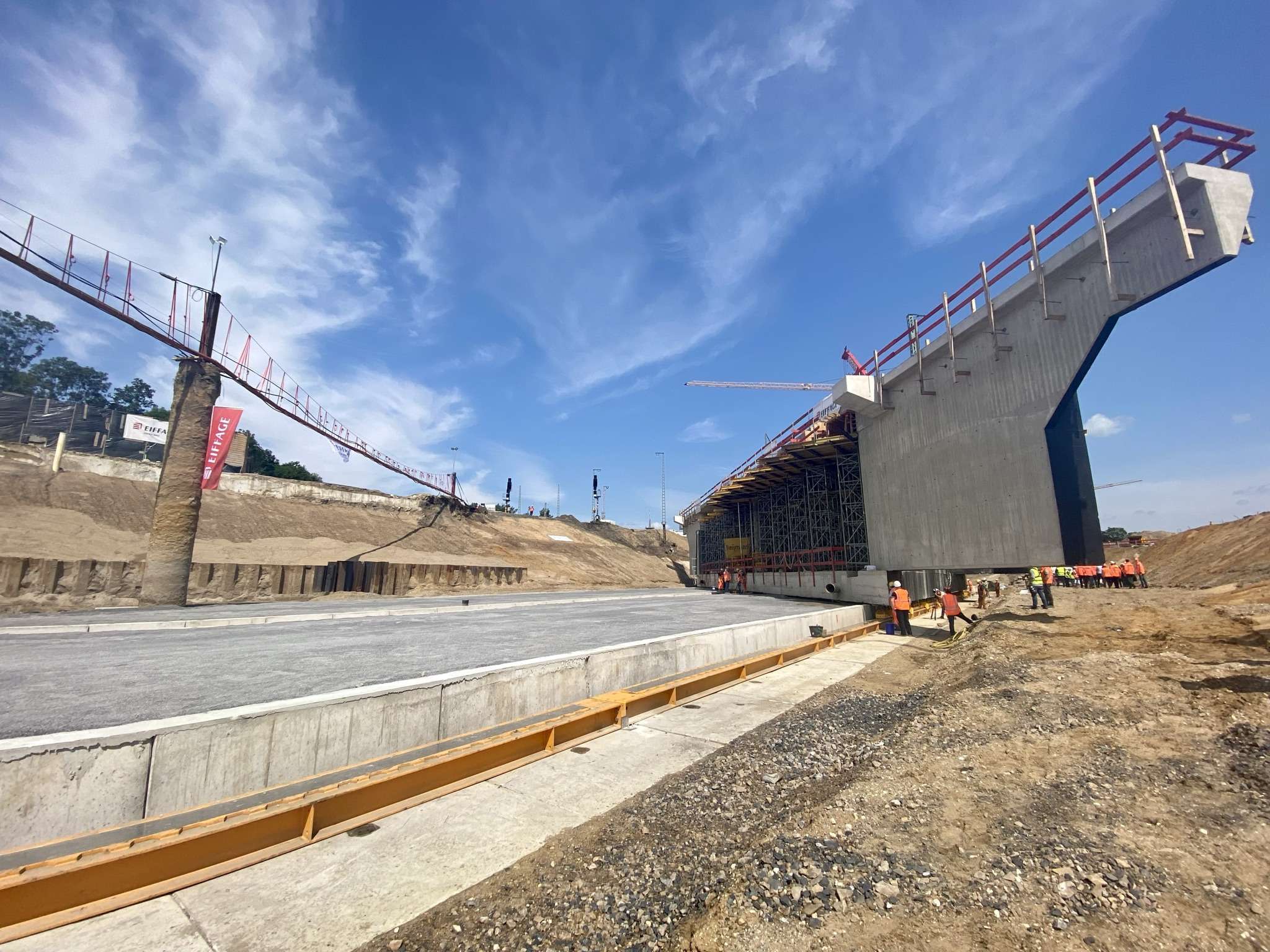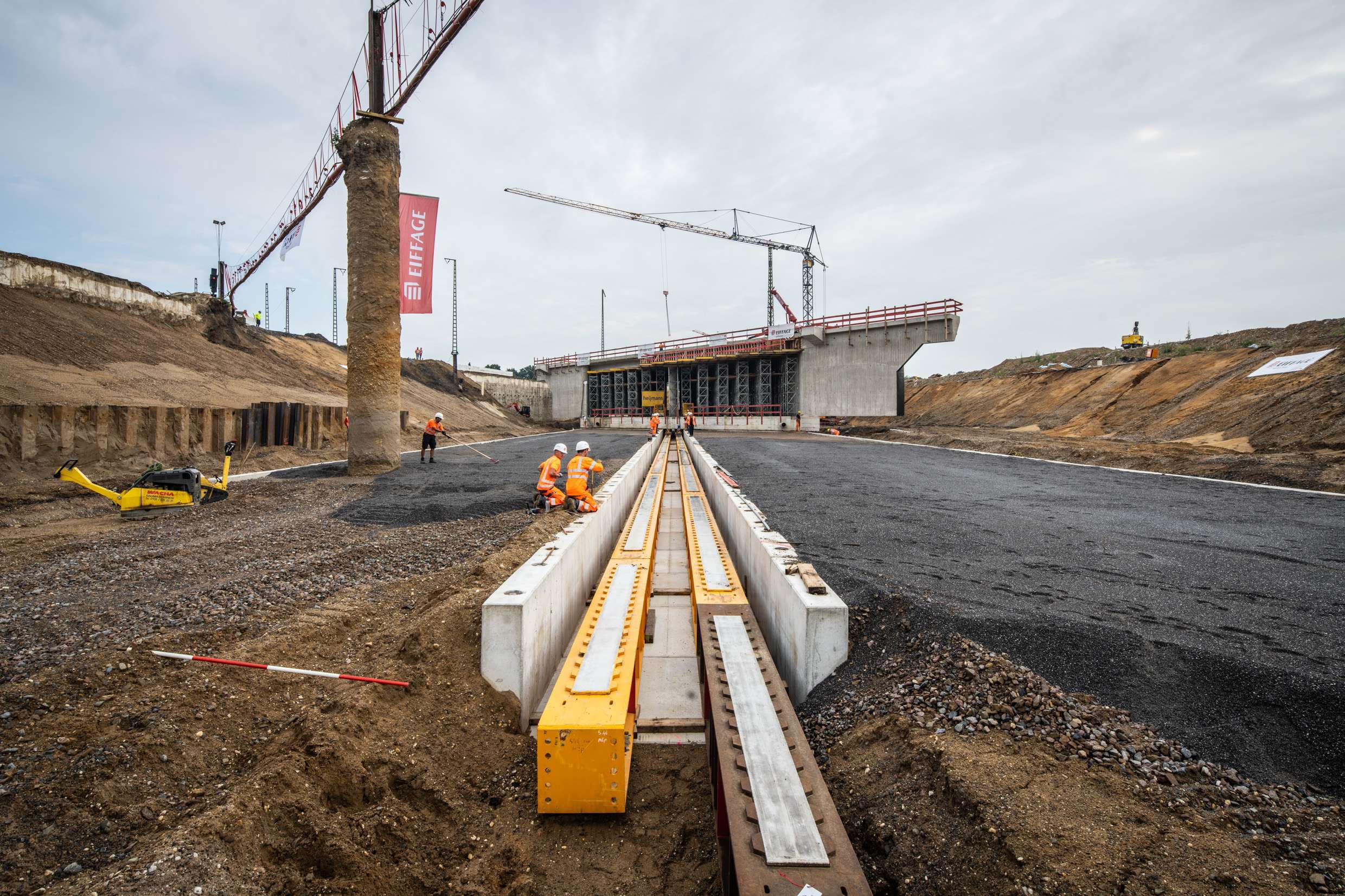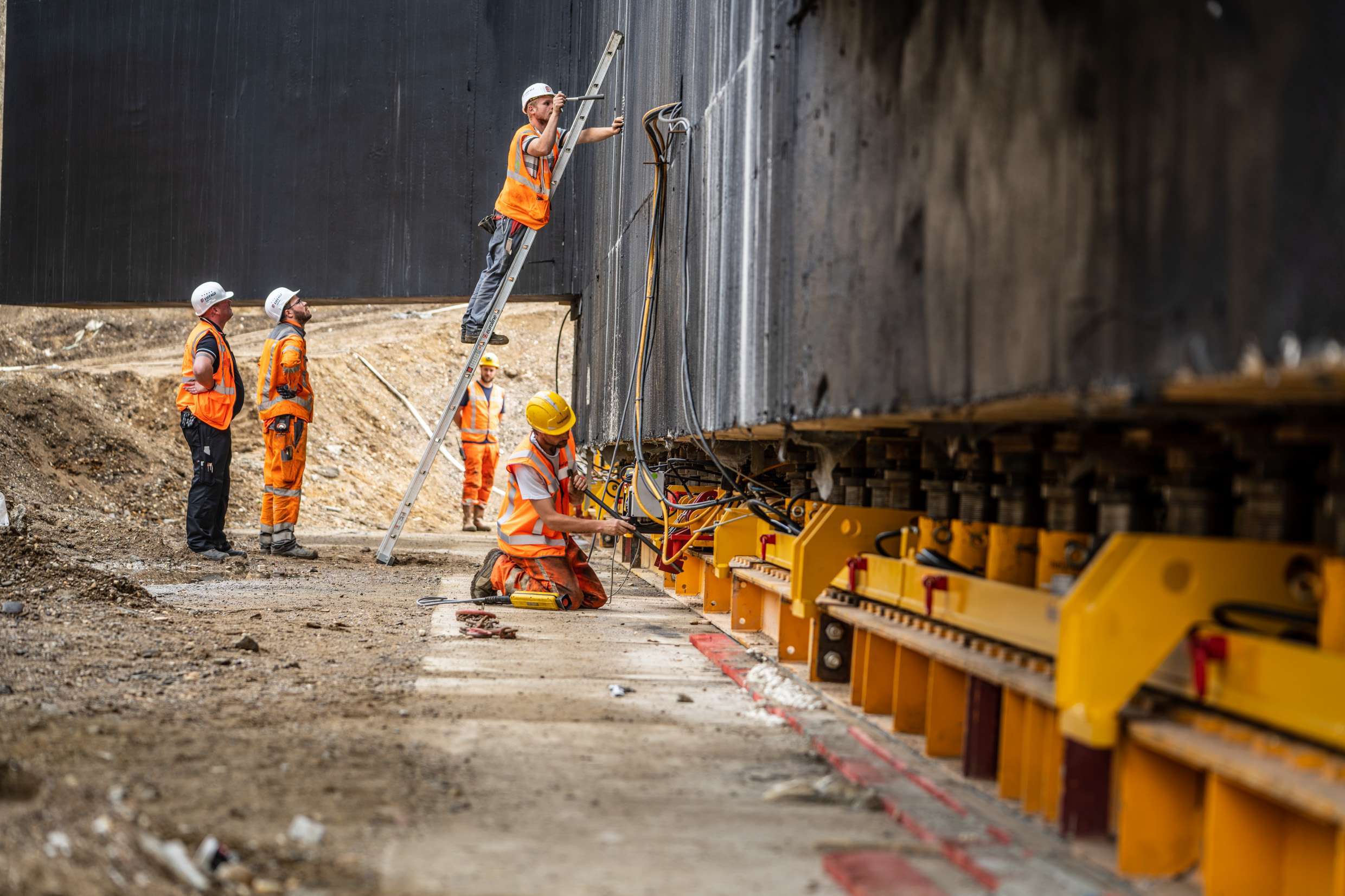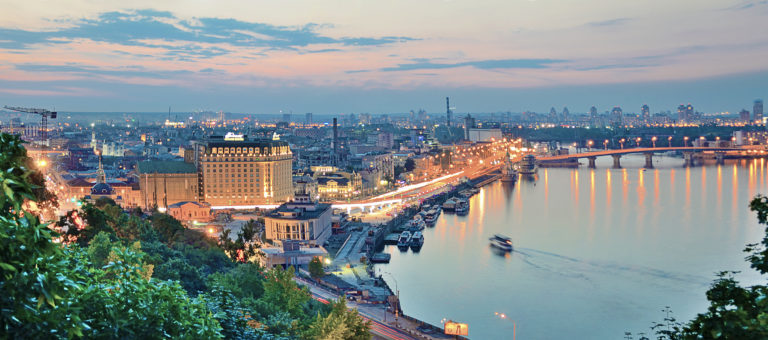Successful slide-in operation for bridge weighing 10,000 tons
This summer, supervised by experts from DB Engineering & Consulting’s (DB E&C) Construction Supervision department, North Rhine-Westphalia’s road construction enterprise slid a bridge section weighing 10,000 tons into position underneath the tracks on the Emmerich–Oberhausen (46/2) railroad line.

At 70 meters (approx. 230ft) in length, the new bridge presented a real challenge to the team. The railroad overpass needs to be so long to allow room for the new four-lane B58n road south of Wesel that will run below it. Furthermore, a third track has already been provided on the structure for the 46/2 three-track upgrade. Adding a third track to the line will increase capacities on this key freight corridor.
Bridge slid-in below the tracks at is destination
Preparations for construction of the railroad overpass began in 2020 with digging of the excavation pit beside the tracks, where construction work on the bridge has been in progress since December 2020. Because the excavation pit was situated on the flood plain at the mouth of the River Lippe, the groundwater level had to be lowered by several meters during construction work to protect the pit.
A four-week work window saw the total closure of the Emmerich–Oberhausen line, allowing time for the bridge to be slid into position below the tracks at its destination. Work involved the total removal of the embankment and tracks on this section of the line.
The slide-in operation itself took over 10 hours, with 70 meters having to be overcome from the production site to the final position. At 10,000 tons, the bridge has a similar weight to that of the Eiffel Tower in Paris.
How do you move 10,000 tons?
Moving such a weight takes years of expertise: the structure was lifted by hydraulic presses and pushed into the correct position on four skid tracks, with the structure moving at an average speed of 7 meters (approx. 23ft) an hour. The embankment was rebuilt and the tracks re-laid following the slide-in operation.
 The bridge is brought into position via skid tracks
The bridge is brought into position via skid tracksThe bridge is brought into position via skid tracks  The bridge is brought into position via skid tracks
The bridge is brought into position via skid tracksThe bridge is brought into position via skid tracks  The bridge is brought into position via skid tracks
The bridge is brought into position via skid tracksThe bridge is brought into position via skid tracks
Total commitment under time pressure
With the work window having been announced a number of years previously, the schedule was set in stone: any problems during the slide-in or follow-up work would have led to delays in operations and therefore to additional costs. Thanks to the tremendous commitment of all involved, work was completed within the tight schedule. The railroad overpass entered service on time and the first trains were able to roll over the new bridge.
DB E&C was represented in this project with all of its technical disciplines, from track, control-command and signaling and overhead power line through to telecommunications and welding supervision.
Less traffic impact, more climate protection
Completion of the railroad overpass represents and important stage in the construction of the B58n bypass, which North-Rhine Westphalia’s road construction enterprise will now continue to build until 2028. The federal government is investing 220 million euros in construction of the bypass, which is intended to reduce traffic and environmental impact in Wesel. With the new road set to connect the A3 and A57 highways, it is estimated that 17,000 fewer vehicles will pass through downtown Wesel.
Here are the dimensions of the rigid structure of the new railroad overpass:
- Length: 69 meters
- Width: 23 meters (for 3 tracks)
- Height: 9.50 meters
- Weight: 10,000 tons
- Excavated earth: 125,000 cubic meters
Contact
Sarah Geißler
Marketing & Communications
EUREF-Campus 14
10829 Berlin
Germany





